Why the automatic ignition of a gas stove constantly clicks and goes off spontaneously: breakdowns and their repair
Modern gas stoves satisfy the end user in almost all respects.Most designs of such household appliances are invariably equipped with an automatic flame ignition system.
However, despite all the perfection of modern gas stoves, the potential owner of such equipment still has to deal with defects. In particular, over time, a defect often appears when the auto-ignition of a gas stove constantly clicks, regardless of the user’s actions. Why does this happen? Let's consider the reasons for such a breakdown and possible ways to repair it yourself.
The content of the article:
Differences in circuit design of the ignition system
Before trying to find out the reason for the incomprehensible “behavior” of a home gas stove or attempting to carry out repairs yourself, it is advisable to familiarize yourself in general terms with the operating principle of the auto-ignition mechanism.
According to available information, there are two design options for such devices:
- On an electromechanical basis.
- Based on electronic automation.
The first option involves a double action by the user, when you first need to activate (turn) the gas handle and then activate (press) the ignition button. Such schemes are somewhat simpler than fully automatic schemes, but are inferior in ignition efficiency.
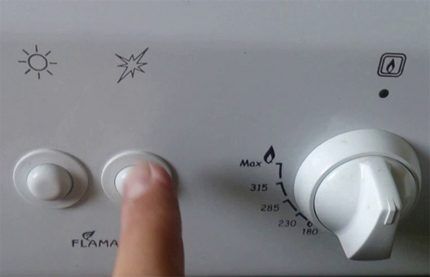
The second option for igniting a gas stove is more convenient.Here, the user just needs to lightly press the gas supply handle slightly inside the landing socket and turn it to a certain angle. The ignition efficiency of an electromechanical circuit is inferior to a fully automatic system.
Both versions of gas stove ignition systems also differ in electrical circuit solutions. The first design is characterized by an electrical circuit that uses a high-voltage capacitor and a simple electrical spark gap.
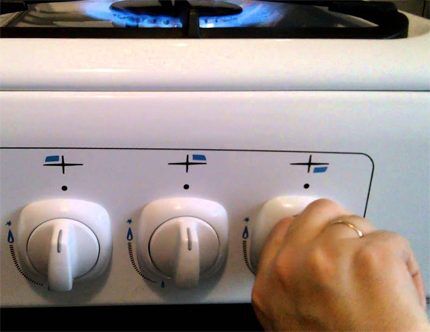
The moment the button is activated (pressed) by the owner of the gas stove leads to the supply of voltage to capacitor, the charge of which forms the breakdown voltage for the spark gap on the secondary winding of the step-up transformer. Accordingly, a spark, promoting gas ignition.
The fully automatic design contains a slightly different circuit, where in addition to the high-voltage capacitor there are electronic components such as:
- diodes;
- thyristors;
- transistors.
This circuit operates in a slightly more complicated version, which results in a higher-quality ignition spark at the output. And also here there is more convenient control for the user.

The ignition unit of a gas stove, as a rule, is carefully packaged, and getting to the electronics is quite difficult. We recommend that you read device and operating principle gas stove.
However, what to do when the electric ignition of a household gas stove constantly clicks, regardless of the adjustment knob? We'll talk about this further.
Reasons for automatic ignition switching on
As it turns out, taking into account practical experience, spontaneous clicks of a gas stove lighter in most cases have nothing to do with the electronic circuit of the ignition unit.

The reasons for the appearance of an uncontrolled spark lie elsewhere. Often the place of formation of such a defect is inner button area ignition control.
Reason #1 - moisture inside the control button
Surely owners of gas stoves have had to deal with uncontrollable ignition clicks on a gas stove after washing and cleaning household appliances.
Most likely, during the washing process, some amount of water got on the ignition control button, as a result, some of the moisture penetrated inside.
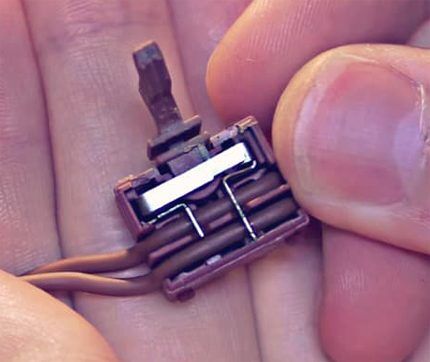
Considering that a high discharge voltage is supplied through the ignition button circuit, a small amount of moisture is enough to cause an uncontrolled spark to appear on the gas stove's spark gap.
Usually a defect uncontrolled lighter spark in such cases it disappears after some time. The moisture inside the button dries out, the short circuit factor disappears, and accordingly, spontaneous clicks stop.
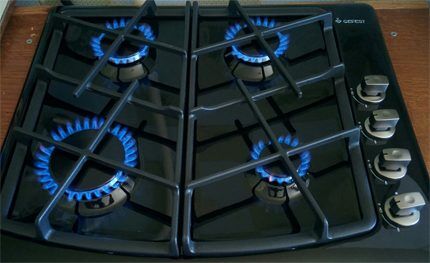
Often, correcting a short circuit defect due to “water that has entered after washing” is helped by lighting all the burners of the gas stove for about 15-30 minutes.
Reason #2 - formation of a junction
The solders that form inside the ignition button can take different shapes. The formation of a junction can be facilitated by the same moisture that gets inside the button after washing. Typically, such a “water” junction is formed due to periodic penetration of water.
Over and over again, deposits accumulate and eventually an oxide junction forms. In addition, grease, soot, and dust can accumulate inside the button housing. All this is also short circuit warning signs between contacts.
If this happens, you will have to disassemble the gas stove:
- remove the top panel;
- open the front subpanel;
- remove the ignition button(s).
Or in the case of more modern designs of gas stoves, it is necessary to get to the structures disk management devices, simultaneously performing the functions of a button and regulator of gas supply to the burners.
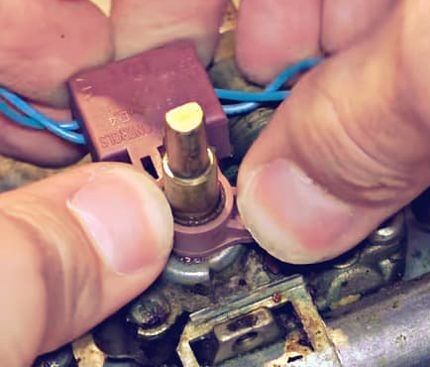
After removing the part from the body of the gas stove, the deposits are cleaned, after which everything is assembled in the reverse order. However, this work is the prerogative gas company specialists. It is not recommended for a user of a gas stove who is inexperienced in such matters to disassemble the device on their own.
Reason #3 - mechanical connection of the contact group
The mechanical connection of the contact group of the ignition button of a gas stove should also be classified as a reason associated with a short circuit. Such a defect, as a rule, can occur on slabs that have been in use for quite a long time. True, the same malfunction cannot be ruled out on new devices, where the quality of components leaves much to be desired.
A mechanical connection is formed by any of the button contacts, which simply breaks off, for example, due to physical wear. The broken part moves away from the attachment point and forms an electrical connection with another contact. In essence, it creates the effect of the ignition button being turned on - that is, the spontaneous activation of electric ignition on the burners of a gas stove.
In case of such a malfunction, the only way out is to completely replace the component.
How to check the functionality of the lighter?
In order not to wastefully dismantle a potentially serviceable component, it is advisable to first check for a short circuit (short circuit).
This is easy to do with the help of a measuring device - a tester that supports the ability to measure resistance in the mOhm range.
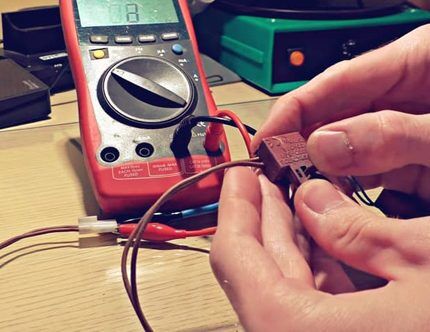
On almost all models of gas stoves, ignition controls are connected by conductors through connectors. Therefore, each control element can be easily disconnected from the circuit for testing.After removing the plugs with conductors from the connectors, connect the tester probes to the released contacts of the button and monitor the readings on the scale.
If a short circuit has formed inside the button housing through the oxide junction, resistance measurements in the “mOhm” range will show some value in any case. When the device readings are equal to the absolute reference point (maximum resistance “mOhm”), there is no short circuit defect.
We also have other articles on our website about stove breakdowns and problems with burners:
Do-it-yourself gas stove repair: common faults and how to fix them Why is the gas burner noisy: analysis of the reasons + valuable recommendations for eliminating the problem Gas burner does not burn well: popular faults and recommendations for eliminating themConclusions and useful video on the topic
Concluding the review of the defect of a constantly clicking gas stove, as well as the possibilities for correction, we recommend that you familiarize yourself with the thematic video below:
In some cases, eliminating the defect is quite possible on your own. However, theoretically and in accordance with the rules, any malfunctions of gas stoves are the prerogative of special (gas) services. This approach is motivated primarily by considerations of general fire safety, and not just the owner of the household appliance directly.
Have you recently eliminated the cause of spontaneous ignition in your stove? Share your experience with other visitors to our site, leave your comments and recommendations, add unique photos taken during the process of repairing the ignition button - the feedback form is located below.



